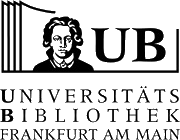Il Complesso funerario di Neferhotep (Luxor): una lunga storia di ‘riutilizzi’. Progetto, metodologie, tecnologie, scavo e protocolli archeometrici integrati
DOI:
https://doi.org/10.21248/fera.28.156Abstract
Abstract
The project is focusing on a monumental funerary complex which is located in the Valley of the Nobles at Luxor. The topographic context is certainly very interesting, both because it is not very well known and deeply investigated, as well as because it appears to have been densely exploited in antiquity and for long time. It was then intensively inhabited in the last two centuries, fact that determined the obliteration of
numerous tombs, but also the loss of the sense of context of this section of the ancient necropolis of Luxor. It was certainly in antiquity an important section of the necropolis, looking at the monumentality of some of the tombs, and it has been continuously used for centuries for funerary
purposes, not only during the “pharaonic period”, but also during later periods, as clearly suggested by Ptolemaic tombs, Greco-Roman inscriptions and finds. A large team is collaborating at the project, including very different scholars and senior students working together from the excavation to the topographic survey, from the diagnostic apping to the conservation, from the anthropometric analysis to the archaeometric studies, from the epigraphic interpretation to the historical reconstruction. A multidisciplinary approach to the study of this funerary complex can guarantee both an interdisciplinary interpretation of the monuments, as well as of their evolution and use throughout a long period.
Too often, in fact, the monuments in Egypt are analysed just looking at their original plan and use in the pharaonic period; nevertheless, in the Theban necropolis the interesting phenomenon of the ‘re-use’ is
widely attested, and the tombs present frequent enlargements, later openings, junctions with neighbor tombs, later passages transforming the original plans.
The Neferhotep’s Complex represents one of the most interesting in this sense because about six tombs have been built around a large courtyard in the late Bronze period, but about three more phases are clearly attested now by the new excavations and surveys, showing that also in the ‘later periods’, from the 7th to the 1st centuries BC, the tombs in this complex were continuously reused for burials and widely reorganized, transforming slowly their original shapes. In Roman times, the presence of the legions in the area, has determined a partial change of use of some of the areas of the necropolis, while some other contexts have continued to be used for funerary purposes.
The plan of the funerary complex is quite articulated (fig.1), with a central square courtyard, crowning and emphasizing the larger tomb, which is known as TT49. It was built just at the end of the XVIII dynasty and still preserves the original spectacular paintings. The conservation of the decorations is based on the use of a non-invasive laser methodology. A German team (PROCON) is conservating the tomb, and within the last eight seasons a large portion of the paintings in the funerary chapel have been completely cleaned and consolidated.
An equip of Egyptologists, both Argentinian (the University of Buenos Aires and the CONICET) and Brasilian (of the National Museum of Rio de Janeiro) is studying and interpreting hieroglyphics and iconographies. Moreover, a team of archaeologists, geologists and topographers from the University of Chieti is working at the excavations of other two tombs of this architectonic complex and at the mapping of the context and of the tombs. During the last seasons also a team of anthropologists and palaeo-botanists from the Museum of Chieti University has joined the team, especially because of the large quantity of human and organic remains coming from the excavations. The aim of this paper is to present the project, its interdisciplinary methodologies and the preliminary results of the last seasons. Moreover, the complex is presented here analyzing not only the main original tombs and monuments, but including the numerous phases through the centuries till recent times.


